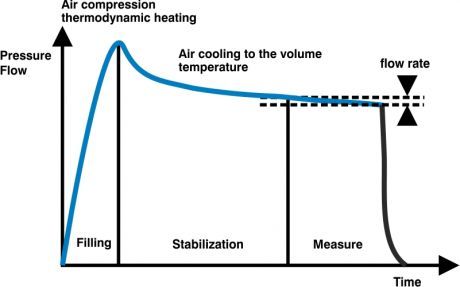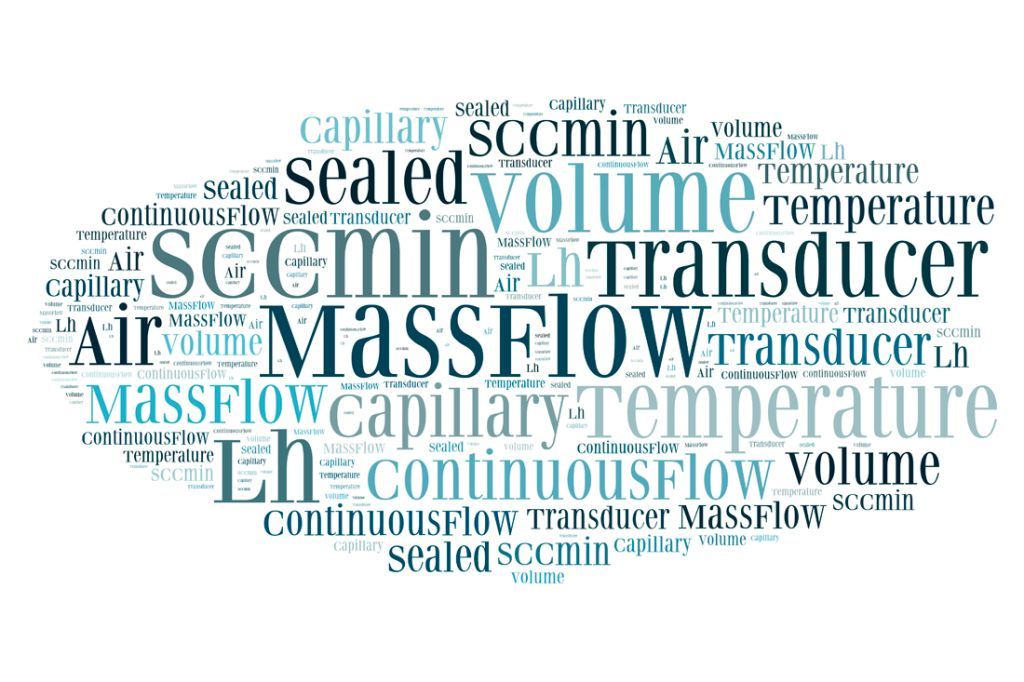As a leak testing technique, mass flow measurement is particularly useful for detecting small leaks in large volumes within very short cycle times. Unlike the mass flow leak test, the test signal is independent of the size of the test volume and the test pressure level.
The flow control method is a common and inexpensive/economic method used to test a wide variety of parts, from automotive components such as cylinder blocks, cylinder heads and gearboxes, to bio-medical components. The gas used is compressed air in a pressure range between 0 and 6 bar. The supply of clean, dry air is recommended to limit the influence of any thermodynamic effects.
The flow control method uses a flow measuring transducer to calculate leak rates based on the amount of air flowing through the part under test and a reference volume.
A leak detector is a specific electronic unit that has a suitable pneumatic circuit and all the necessary processing.
The practical application of this technology is found in the following cases:
• If the volume of the piece is not known and is variable (eg flexible packs or bottles).
• If it is necessary to reduce the test times to a minimum.
• If you need to have continuous measurement of the leak, to carry out analysis and repairs.
• If the measured leak is such that the pressure drop system cannot maintain a constant test pressure, effectively distorting the leak calculation.
Another method, known as the continuous flow technique, relies on a differential pressure transducer with a laminar element for measuring leak rates. This technique is often used in the gas sector due to its practicality: while the leak detector displays the leak value on the screen, the operator can adjust or tighten the component connectors, until the desired flow rate is reached.
The following scheme illustrates the typical measurement cycle of a flow control, with the pressure inside the test piece represented on the time axis. The scheme is identical to that reported for the pressure drop, but the measurement technology is different.
At the beginning of the measurement cycle, the test volume and reference volume are pressurized with air to the desired level. Therefore, a stabilization period is needed to discharge any thermodynamic effects and air turbulence. Finally, the leak causes a pressure variation which is read by the transducer, calculating the exact quantity of air leaked.


